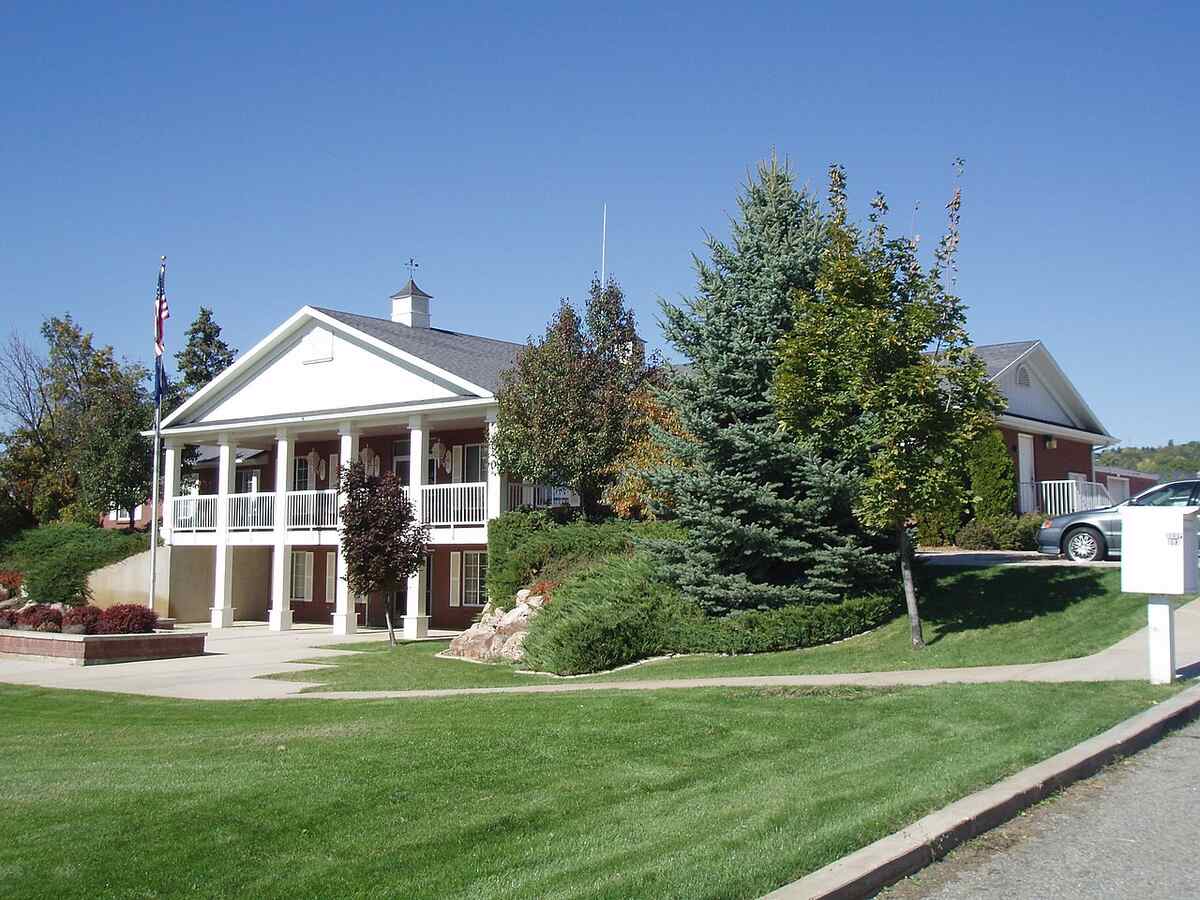
Are you buzzing around in the Beehive State, not sure which type of grass seed you should bee planting in Utah for the best results? We’re here to help guide you around the stingers to the best grass types for the mountains in the north of Utah to the desert south.
If you’re short on time, buzz on over to our guide on how to choose the best grass type for your Utah lawn.
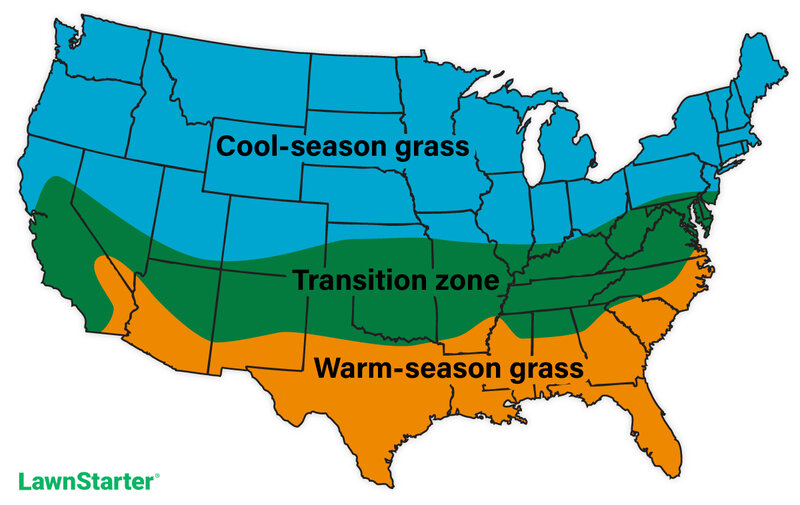
Cool-Season Grasses
Cool-season grasses survive best in northern climes. They start growing in late winter to early spring and go dormant in the summer if not watered. If you do water them, their growth rate slows so they can cope with the heat. In the winter, cool-season grasses suspend growth and develop an “antifreeze” to the cold.
Cool-season grasses then begin to grow again in the cooler fall months if moisture is available. The best time to plant cool-season grass? In the early fall, of course, when the daytime temperatures fall between 60 and 75 degrees. These types of grasses are perfect for Salt Lake City and its surrounding areas.
Fine Fescue
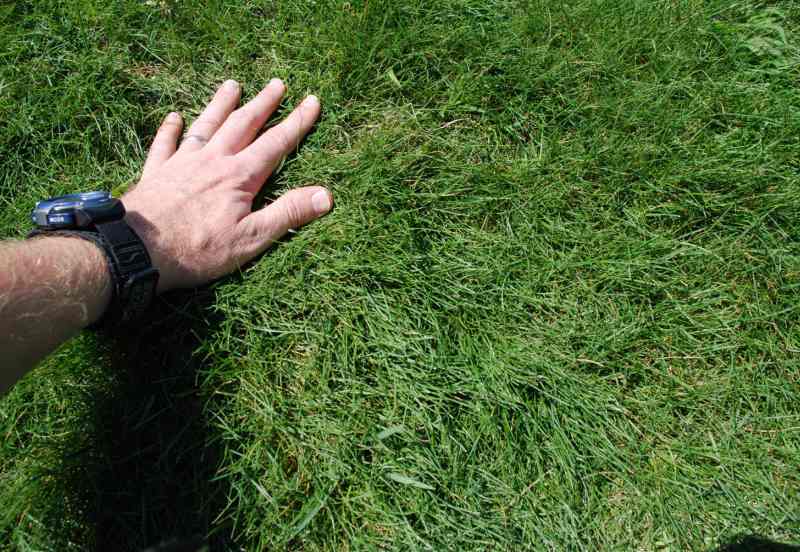
Aaron J. Patton, Ph.D. / Turfgrass Extension Specialist at Purdue University
Fine fescue grass can be grown in a variety of soils. This grass grows well in shady areas. Often planted in a seed mix of its five varieties, fine fescue also grows well with Kentucky bluegrass and, less often, tall fescue.
Fine fescue should be overseeded in the fall to repair bare patches. It is considered low maintenance because of the following factors:
- It grows slowly (less mowing).
- It has good drought tolerance (less irrigation).
- It requires less fertilizer (less work).
- It doesn’t need a lot of pesticide applications (even more less work).
Classification: Cool-season grass
Spreads by: Creeping red fescue spreads by rhizomes, whereas other fine fescues, such as Chewings, hard, and sheep, are bunch-type grasses.
Shade tolerance: Moderate to high, depending on the species
Drought tolerance: Moderate to high, depending on the species
Foot traffic tolerance: Low to moderate, depending on the species
Maintenance needs: Low fertilizer and mowing needs
Mowing height: Set mowing height between 2.5 and 4 inches, depending on species.
Potential for disease: Moderate. Common diseases include red thread, leaf spot, dollar spot, summer patch, and powdery mildew.
Soil pH: 6-6.5
Soil type: Will not perform well in wet soil conditions. Prefers drier soils and tolerates a wide range of soil types and fertility.
Other notes: The fine fescue turfgrasses include strong creeping red fescue, slender creeping red fescue, chewings fescue, sheep fescue, and hard fescue.
Grass Seed Options:
– Outsidepride Legacy Fine Fescue Grass Seed (5 lbs.)
– Eretz Creeping Red Fine Fescue Seed (choose your size)
– Outsidepride Creeping Red Fine Fescue Grass Seed (25 lbs.)
– Outsidepride Hard Fine Fescue Grass Seed (10 lbs.)
Kentucky Bluegrass

Photo Credit: Matt Lavin / Flickr / CC BY-SA 2.0
Used for lawns, athletic fields, golf courses, and pastures, Kentucky bluegrass is one of the most important cool-season grasses in the U.S., arriving in North America with European traders. Per Utah State University (USU), Native Americans found Kentucky bluegrass where settlers went, so they called it “White man’s tracks.”
Often mixed with other cool-season grasses such as perennial ryegrass, Kentucky bluegrass prefers full sun to partial shade. It has little drought resistance and grows well in areas where the July average temperature does not exceed 75 degrees F. Kentucky bluegrass provides an excellent high-traffic lawn.
Classification: Cool-season grass
Spreads by: Rhizomes
Shade tolerance: Low
Drought tolerance: Moderate
Foot traffic tolerance: Moderate
Maintenance needs: Moderate mowing frequency and high fertilization needs.
Mowing height: Set mowing height between 2.5 and 3.5 inches.
Potential for disease: Moderate to high; prone to several diseases, such as dollar spot, leaf spot, necrotic ring spot, summer patch, and stripe smut.
Soil pH: 6-7.5
Soil type: Performs best in well-drained, heavy soils with high fertility.
Other notes: Kentucky bluegrass develops thatch easily, so plan to dethatch or aerate in fall or spring after the grass starts growing.
Grass Seed Options:
– Jonathan Green (11970) Blue Panther Kentucky Bluegrass Grass Seed (3 lbs.)
– SeedRanch Midnight Kentucky Bluegrass Seed (5 lbs.)
Perennial Ryegrass
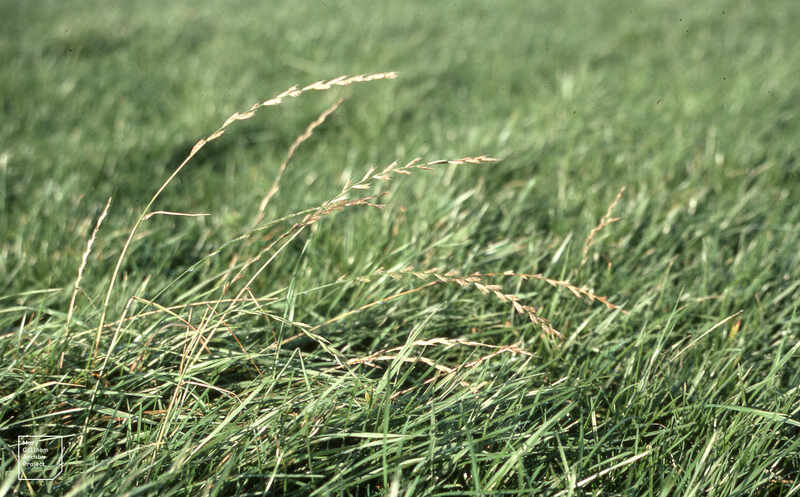
Photo Credit: Dr Mary Gillham Archive Project / Flickr / CC BY 2.0
Often mixed with Kentucky bluegrass for quick germination, diversity, and color, perennial ryegrass has a high traffic tolerance and establishes quickly, and some varieties have improved disease resistance. It likes to be planted in sunny areas and has a dark green color.
Perennial ryegrass performs well in parks, golf courses, athletic fields, racetracks, and home lawns. Native to Asia, North Africa, and Europe, it requires less maintenance than Kentucky bluegrass. It lacks heat and drought tolerance but can tolerate high traffic and cold temperatures.
Classification: Cool-season grass
Spreads by: Has a bunch-type growth habit
Shade tolerance: Low
Drought tolerance: Low
Foot traffic tolerance: High
Maintenance needs: Moderate mowing and fertilization requirements. Thatch is not significant.
Mowing height: Set mowing height to 1.5-2.5 inches
Potential for disease: High. Common diseases include gray leaf spot, red thread, and leaf spot/melting-out.
Soil pH: Can grow in soils with a pH between 5 and 8 but prefers between 6 and 7.
Soil type: Prefers good drainage and fertility but can tolerate some poor drainage.
Other notes: Perennial ryegrass seeds germinate quickly, usually within 5-15 days.
Grass Seed Options:
– Outsidepride Perennial Ryegrass Seed (5 lbs.)
– Eretz ProTurf Perennial Ryegrass Fine Lawn Seed (choose your size)
Turf-Type Tall Fescue

Aaron J. Patton, Ph.D. / Turfgrass Extension Specialist at Purdue University
Introduced into the United States from Europe in the 1800s, turf-type tall fescue tolerates heat and drought despite the fact that it is a cool-season grass. Best of all, it grows with minimal maintenance. However, homeowners will need to overseed tall fescue every few years to repair bare spots and thinning.
Paul G. Johnson, a turfgrass professor at USU, points to tall fescue as a good alternative to Kentucky bluegrass. But don’t plant Kentucky-31, the oldest variety of tall fescue. Instead, plant the newer turf-type tall fescues that produce dense, year-round green lawns and tolerate shade better.
Classification: Cool-season grass
Spreads by: Produces short rhizomes but has a bunch-type growth habit.
Shade tolerance: Moderate
Drought tolerance: Moderate to high
Foot traffic tolerance: Moderate
Maintenance needs: Frequent mowing. Does not produce significant thatch.
Mowing height: Set mowing height to 2 inches when the grass reaches 3 inches tall.
Potential for disease: Tolerant of most diseases when properly maintained.
Soil pH: 5.5-6.5
Soil type: Adapted to a wide range of soil conditions but prefers fertile clay soils with good drainage.
Other notes: Turf-type tall fescue has the deepest root system of the cool-season grasses, helping it to avoid the consequences of drought conditions.
Grass Seed Options:
– Triple-Play Tall Fescue Grass Seed Blend (5000 sq ft)
– Eretz Kentucky 31 K31 Tall Fescue Grass Seed (choose your size)
– Pennington The Rebels Tall Fescue Grass Seed Mix (7 lb.)
Warm-Season Grass
Since Utah is famous for its mountains and ski slopes, some people might be surprised when they discover that the southern part of the state can be hot and dry, which calls for a warm-season grass lawn. In this region, some local governments are trying to focus on water conservation, and Buffalograss is one way to use less water.
Buffalograss
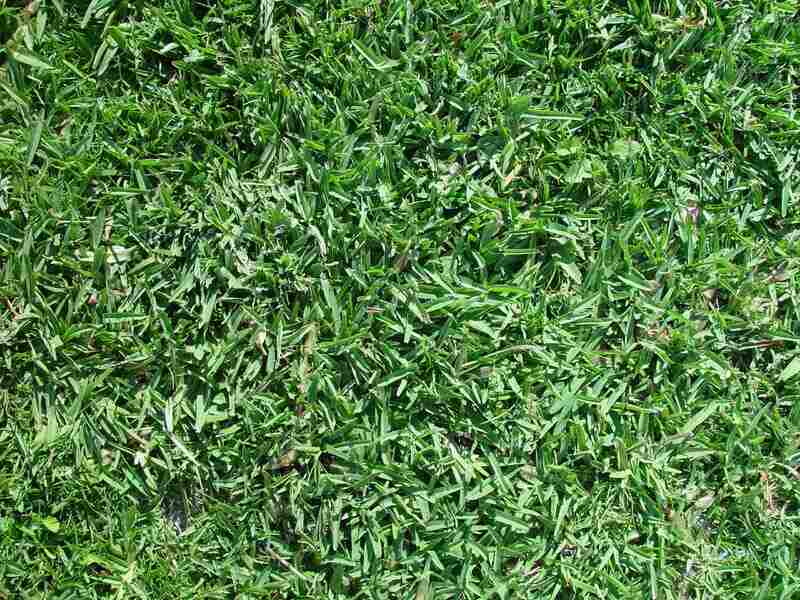
Photo Credit: Pixnio
Known for its state and national parks and monuments, southern Utah is the hottest and driest part of the state. Although tall fescue can grow here, established buffalograss is more sustainable because it requires only 1 to 2 inches of water every 2 to 4 weeks.
As a native grass of the North American prairie states, including Utah, buffalograss has light green grass blades that turn tan to lavender when dormant or without irrigation. However, buffalograss lawns can be difficult to establish, especially without extensive watering.
Classification: Warm-season grass
Spreads by: Stolons
Shade tolerance: Low
Drought tolerance: High
Foot traffic tolerance: Low
Maintenance needs: Low fertilizer and mowing needs. Requires weed control.
Mowing height: Set the mowing height between 2 and 3 inches.
Potential for disease: Good tolerance against diseases and insects
Soil pH: 6.5-7.5
Soil type: Native clay soils, not sandy soils
Other notes: Buffalograss can be injured and discolored by many off-the-shelf herbicides; consider a professional landscaping company for herbicide applications. If your soil is exceptionally sandy, buffalograss may not be the best choice for your lawn.
Grass Seed Options:
– Everwilde Farms Buffalograss Seeds (1 lb. of seeds)
– Buffalograss seed (primed) (5-lb. bag)
Best Grass Seed for Salt Lake City
Because Salt Lake City comes in at an altitude of around 4,330 feet, you’ll need to plant grass types for cool-season lawns. The best grass types for Salt Lake City include fine fescue, Kentucky bluegrass, perennial ryegrass, and tall fescue.
How to Choose the Best Grass Type for Your Utah Lawn
The best grass for Utah is tall fescue. It has better shade and drought tolerance than Kentucky bluegrass, with the same foot-traffic tolerance. However, the best grass type for your yard depends on so many other factors.
So, whether you want to bee or do not want to bee swarming about maintaining your lawn in the Beehive State, you’ll want to pick the grass that provides the best honey for you. Here’s the buzz on how to choose the best grass type for your Utah yard.
Shade Tolerance
What’s your tree shade situation? Utahns might have trees that reach greater heights, or perhaps ones that will grow to provide shade. You’ll need to know which lawn grasses will live in the shade and those that won’t.
Low shade tolerance: Kentucky bluegrass, perennial ryegrass, buffalograss
Moderate shade tolerance: Tall fescue
High shade tolerance: Fine fescue
Drought Tolerance
Choosing a grass based on its drought tolerance depends on where you live. If you’re in southern Utah, you’ll want a grass that will survive the desert conditions, but if you’re in the north of the state, you might need more precipitation for your cool-season grass.
Low drought tolerance: Perennial ryegrass
Moderate drought tolerance: Kentucky bluegrass, tall fescue
High drought tolerance: Fine fescue, buffalograss
Foot Traffic Tolerance
Got kids? Or pets? Or like to play a lot of lawn games with your friends? Then you’ll need to know which grasses have a low or high tolerance for this type of rush-hour swarming.
Low traffic tolerance: Fine fescue, buffalograss
Moderate traffic tolerance: Kentucky bluegrass, tall fescue
High traffic tolerance: Perennial ryegrass
Maintenance Needs
Whether you’re skiing Utah’s slopes or hiking in one of the national parks, homeowners likely need a low-maintenance grass. If the appearance of your grass takes precedence, then a high-maintenance grass will likely look a bit better but require more work.
Low maintenance needs: Fine fescue, buffalograss
Moderate maintenance needs: Perennial ryegrass, tall fescue
High maintenance needs: Kentucky bluegrass
Don’t Bumble the Grass in the Beehive State
Call a Utah lawn care pro near you if you’re still unsure about which grass to plant or just don’t want to do all the work of establishing and then caring for a new lawn. We have trusted lawn care pros in Salt Lake City, West Jordan, Provo, Orem, Sandy, Ogden, South Jordan, and other areas around the state.
Additional resources:
Main Image Credit: Ntsimp / Wikimedia Commons / CC0 1.0
LawnStarter participates in the Amazon Services LLC Associates Program, an affiliate advertising program. LawnStarter may earn revenue from products promoted in this article.